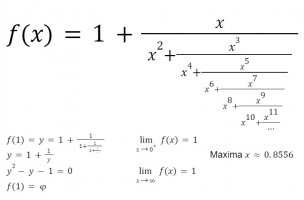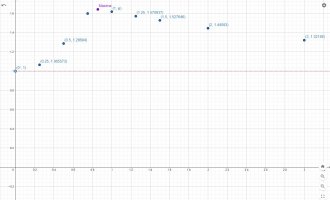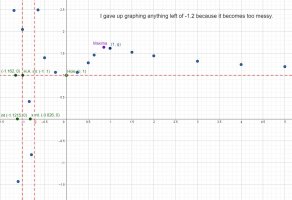In picture #1 is everything I've gathered. My question is how can you simplify the function into a more manageable form?
I have no idea what's going on when the function gets negative values of x. It seems all over the place, but I do know f(-1) = 1.


I have no idea what's going on when the function gets negative values of x. It seems all over the place, but I do know f(-1) = 1.
- How to simplify function into a more manageable form?
- What's up with the negative value chart of this function?
- Using the simplified form, find the exact value of the maxima if it (the simplified function) is differentiable.
- Prove the limits using the simplified function.



